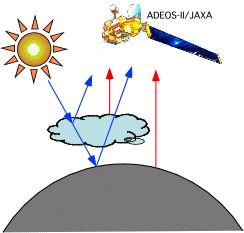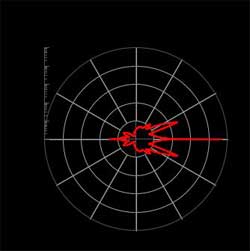Radiative transfer
Sensors loaded on Earth Observation satellite sense solar irradiance reflected on the Earth surface and thermal radiation and microwave emitted from the Earth. (Solar irradiance, thermal radiation, and microwave are all electro-magnetic waves.) By using radiative transfer program, we can calculate electro-magnetic waves which reach sensors after scattering from the Earth air and the surface.

Radiative transfer program
Radiative transfer programs calculate scattering and absorption of electro-magnetic waves by atmospheric molecules (nitrogen, oxygen, and water vapor) and small scattering particles (small particles, what is called, cloud droplets and aerosols)
The higher calculation speed of programs is, the better the quality is, because of having more fine wavelength resolution and capability to apply for many kinds of small particles. However, high wavelength resolution takes a lot of calculation time in general.
And, for small scattering particles in the air, spherical small particles are easily treated with. On the other hand, we must try one way after another in calculation of non-spherical small scattering particles such as ice crystals and yellow sands.
 Left: spherical particle Left: spherical particle |
 Right: hexagonal particle Right: hexagonal particle |
Ref. phase function calculated by geometrical optics approximation (in case of incoming electro-magnetic wave from the left)
In our research, we study techniques which improve wavelength resolution while keeping calculation time short and study to apply practically electro-magnetic wave scattering by non-spherical particles.

